No big Instagram profile skips the snapshots of Cala Deià. The distinctive bay ranks high among Mallorca’s top destinations. But don’t sleep on Deià – also known as Deyà – it’s a picturesque village. Nestled in the heart of the Serra de Tramuntana, both the mountain village and rugged bay are only reachable through the impressive coastal road linking Valldemossa to Sóller. Visitors not only get a deep dive into the region’s history but also soak in breathtaking views of the vast sea during their visit.
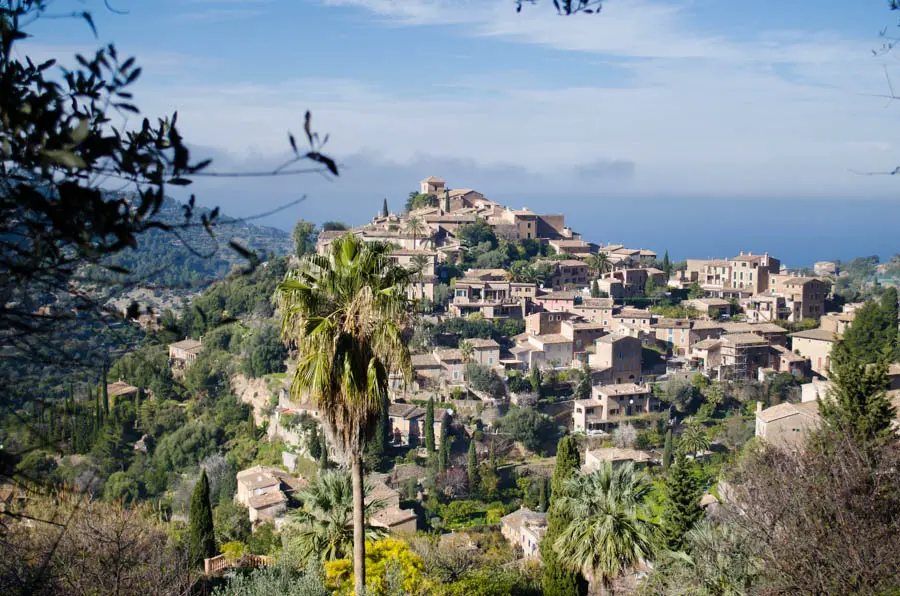
Transparency note: Some links in this post may lead to external booking opportunities. If a purchase is made, we receive a small commission. The price does not change for you.
For the longest time, Cala Deià and Deià in Mallorca didn’t strike me as the go-to spots. The village seemed a bit much with all the artists, wealthy Finca owners, and upscale dining. Plus, a rocky cove like Cala Deià doesn’t scream “ideal beach day with kids.” But boy, was I wrong! Turns out, kids don’t always need sandy shores.
Beyond that, the artist village itself is a great starting point for many lovely short hikes. The coastline on both sides of Cala Deià is among the most impressive on the island. As part of the Tramuntana mountain range, Deià is also a UNESCO World Heritage Site. In this lengthy post, I’m dishing out my recommendations for both Deià village and Cala Deià, along with things you can do in both spots.
The Cove & Beach of Cala Deià
On the rugged north coast, where sandy shores are scarce, and the sea is too wild for a leisurely swim, Cala Deià doesn’t exactly break the mold. This is especially evident in winter when waves crash against the cliffs, and both beach bars are closed. However, even in the off-season, a trip to Deià isn’t quite complete without taking in the sights of its namesake cove.
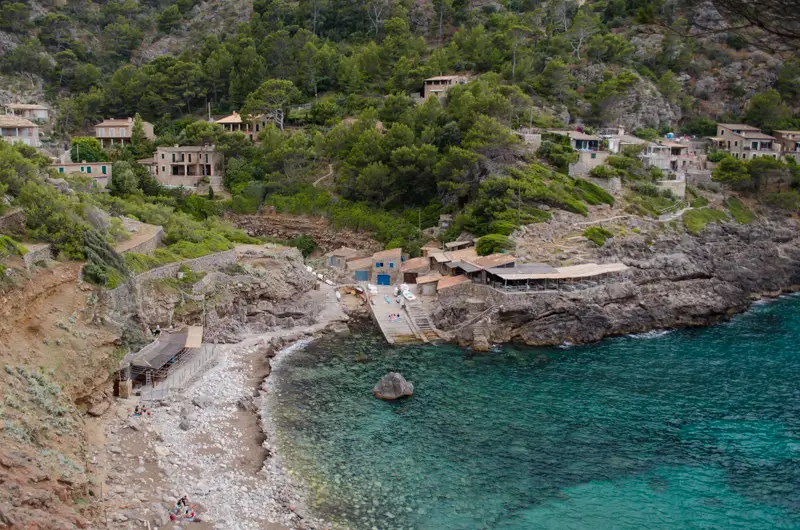
In the past, Cala Deià was mainly frequented by fishermen who sailed out in small sailboats or rowboats for their catch and returned to the village or headed to Palma after a day’s work. Nowadays, the beach is almost exclusively populated by tourists. The stony and rocky shore may not be ideal for an entire day at the beach, but it serves as a starting point for various excursions, snorkeling, and exploration—an absolute must for families and kids. I’d just recommend packing swim shoes.
Getting to Cala Deià offers two options and numerous paths. Right in front of the bay is a paid parking lot, albeit quite expensive and always packed in the summer. Over the years, the parking situation has become so tight that a barrier was installed on the access road. Only residents can easily pass through, and visitors can if there’s still space at the beach parking lots.
Even if that’s not the case, it’s not a big issue. The more scenic route doesn’t involve the access road but takes you through the small paths amidst the terraced fields. I’ll share more about this in the next section. In Cala Deià, there’s a restaurant and a bar, open only in summer and always bustling with visitors.
Hiking in Cala Deià
Since we never really stick around Cala Deià for too long (either it’s too crowded or uncomfortable), we always incorporate the cove into shorter hiking trips during our excursions. And there are quite a few that kick off and conclude right at Cala Deià.
Family friendly trails: Hiking with children on Mallorca.
From the Village to the Cala Deià Beach
Our first trip to Cala Deià took us on a little adventure with a three-year-old and his six-year-old brother from the village to the bay. The route is quite manageable and can be combined with other tour suggestions, like our scavenger hunt through Deià, for older kids.
The short stroll begins on the main road, winding through terraces and olive groves, leading directly to the cove. The village promenade and the detour to Cala Deià are thoroughly detailed in the E-Book of our scavenger hunt.
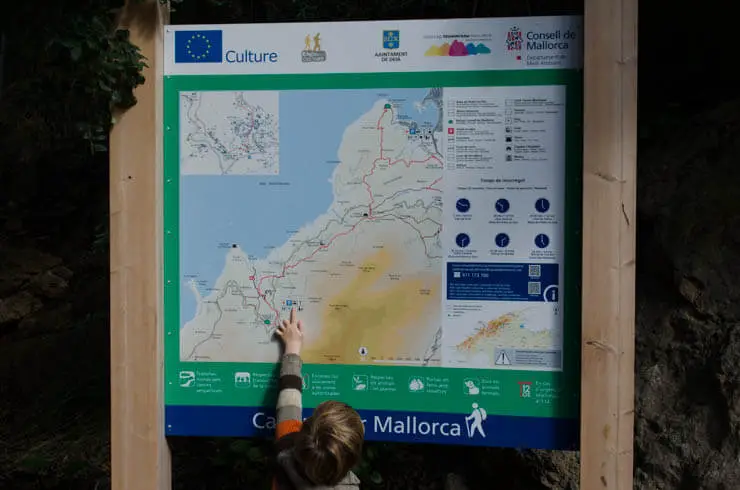
What’s lovely about this stroll is that it takes you through various landscapes. At the start, you’ll stroll past orange groves, then traverse olive plantations, and suddenly, you’re at the sea, gazing upon the coastline shaped by wind and weather.
From Deià to Llucalcari
Llucalcari is a small village with no more than 15 houses and a maximum of 20 residents. This settlement, constructed from natural stones near Cala Deià, traces its roots back to an estate from the time of the Arab reign. In the past, defensive towers stood here to guard the coast against pirate attacks. Three of them are still standing; one has been transformed into a hotel.
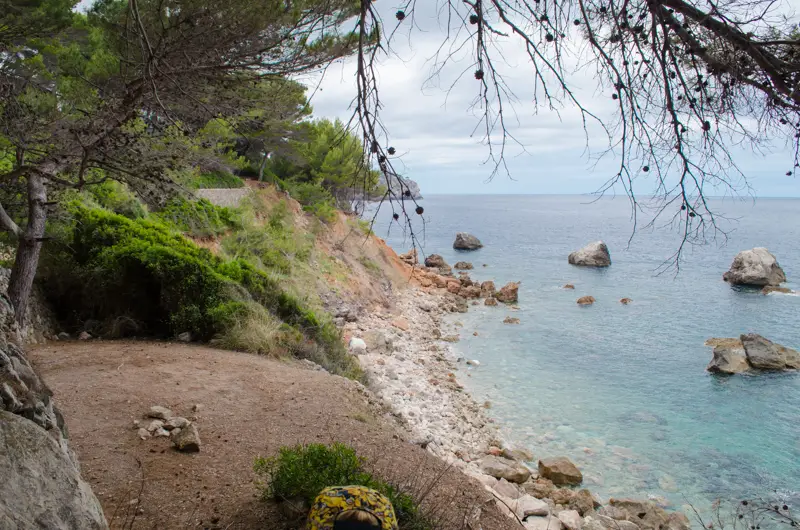
From the village to the coast, you’ll reach the Es Canyeret Beach, where a spring is located. Many locals come here to take a mud bath. While Llucalcari is directly accessible, there are no parking facilities. That’s why the path along the coast, named Camí de los Pintores, is the better option to explore this part of Deià.
Torre de Sa Pedrissa: Watchtower at Cala Deià
Llucalcari isn’t the only spot with watchtowers. The Torre de Sa Pedrissa stands on the west side of Cala Deià, offering a slightly different perspective of the perforated rock of Sa Foradada. To reach the old watchtower, veer left just before Cala Deià and traverse the small settlement. From there, a little hiking trail leads to the tower.
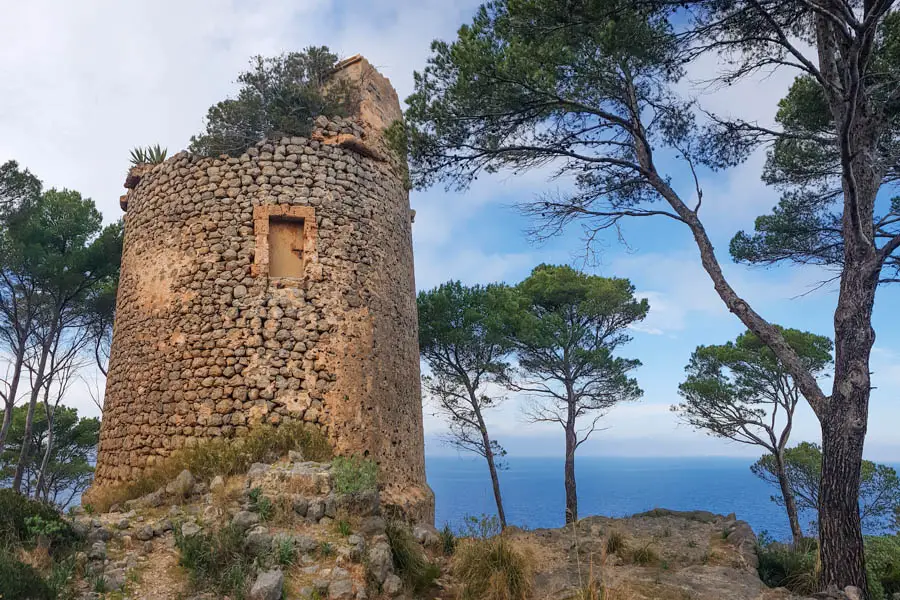
The tower itself isn’t on private property, since the entire coast of Mallorca is public. However, numerous signs make it clear that the area behind is off-limits. Don’t be overly deterred by these signs or the instructions not to picnic or linger too long. Stick to the designated paths, and everything will be fine.
Things to see in Deià
Although the appearance of Deià has evolved in recent years, the typical terrace gardens, built by the Arabs from the 10th century onward, are still intact. In the late Middle Ages, five watchtowers were erected for defense against pirates, safeguarding the coast. The best way to explore Deià is to wander aimlessly through the narrow lanes.
Best view of Deià
The finest view of the honey-colored houses of Deià and the mountains of Mallorca can be found from a spot that only a few discover because it’s halfway up the mountain on the opposite side of the town center. The little ascent along the Torrent des Racó is undoubtedly worth the effort.
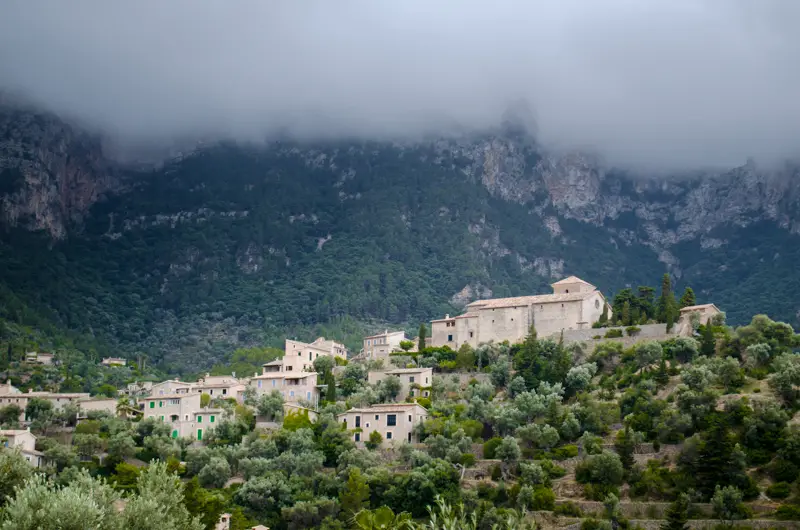
This spot is particularly impressive outside the summer months, when the torrent carries a substantial amount of water and cascades down the mountain like a waterfall alongside the stairs. Water was also what led the Arabs to settle here. They created the terraced fields, where olives are still grown today, and installed a water distribution system that supplied all the buildings in the village with water from the torrent. In our scavenger hunt through Deià, we guide you to this special place.
Archaeological Museum Deià
Opening hours: Sundays 11 am – 1 pm, Saturdays 5 pm – 7 pm, guided tours by appointment
One of the most distinctive attractions in Deià is the Museu Arqueològic de Deià. It is privately owned and located on the path leading to the hostel Can Boi and Cala Deià. The building housing the museum is a 17th-century grain mill, restored and converted by William and Jackie Waldren.
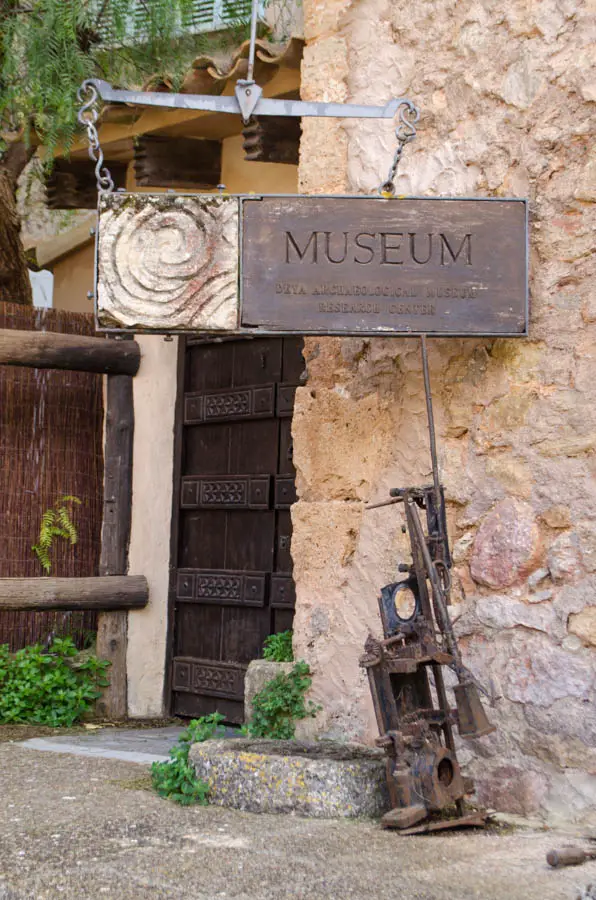
The two Americans arrived in Mallorca from the USA in the 1950s and participated in excavations to explore the beginnings of the island’s settlement. They established the museum with the aim of showcasing their findings, which include not only stone lighters and amphorae but also the remains of the extinct goat species Myotragus Balearicus from the Muleta cave.
The Mallorcan prehistoric goat likely existed even before the arrival of the first humans on Mallorca. With the settlement, the animal, larger than conventional goats, was either domesticated or displaced.
The Wash Places of Deià
Water has always been the most crucial element of the island, a precious resource used with foresight. Accordingly, it was strategically directed through Deià. It wasn’t just stored in cisterns and used to power grain mills. The women of the village also had access to it. For this purpose, covered wash places were built in various parts of Deià, of which three are still found today.
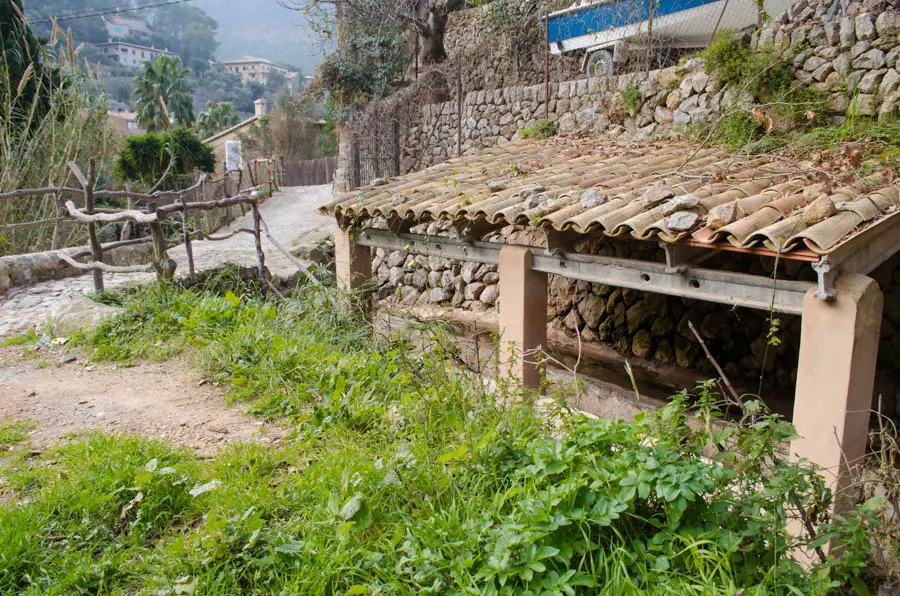
Each of these places is situated right by the torrent. In the past, women gathered here to scrub laundry in strenuous labor while exchanging news about the village.
Cannons, the Church, and the Cemetery of Deià
Below the parish church, Parroquia Sant Joan Baptista, lies an expansive square, fantastic for various reasons. Firstly, you get another great view of the mountains and their numerous waterfalls, especially after rainfall. Additionally, the square is adorned with some old cannons that are sure to catch the interest of children. There’s also a replica of the skull of the prehistoric goat.
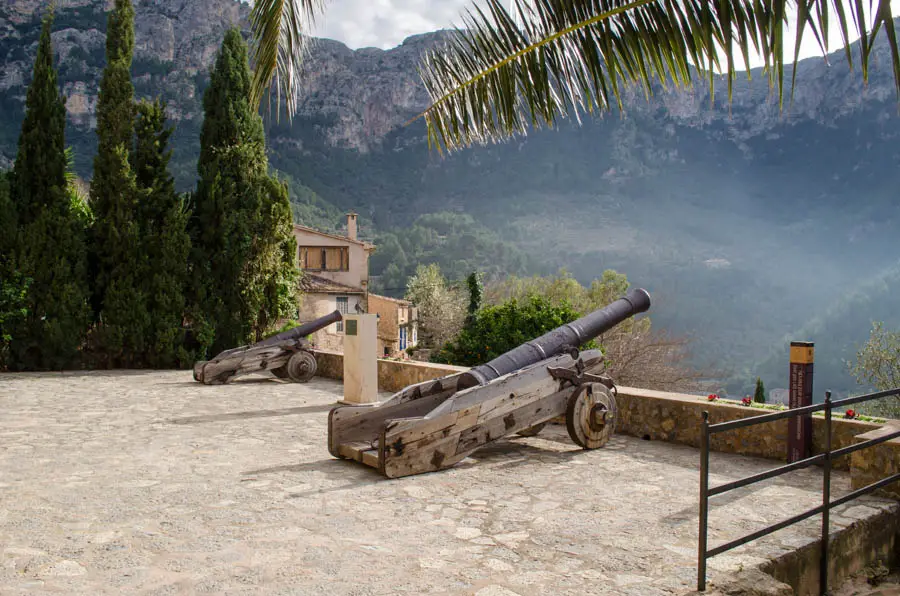
Behind the square, the parish church stands tall. The church tower was once a watchtower, with origins dating back to the 16th century. Entry to the church is free, it’s open daily, and houses a small museum with artworks.
Behind the church is the cemetery of Deià, where many painters, poets, and musicians who chose the village as their home are laid to rest. The grave of Robert Graves, the first of his ilk, immediately catches the eye. What makes the cemetery special, though, is its elevated position high above the coast, providing spectacular views of the Mediterranean. Even if you’re not usually a fan of cemeteries, it’s definitely worth a visit here.
Artists in Deià and Cala Deià
Deià is home to approximately 617 residents (IBESTAT 2019), but only about half of them are native Mallorcans. The other 50 percent consists of Northern Europeans and some Americans who have settled here in recent decades. With their arrival, the village’s appearance underwent a transformation. The modest farmhouses disappeared, making way for luxurious residences.
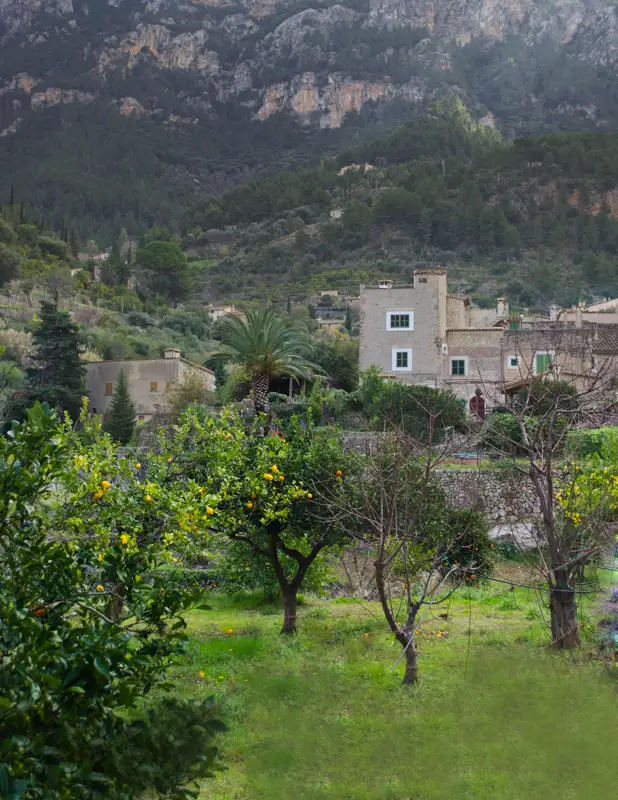
Initially, it was primarily painters and visual artists, including Pablo Picasso, who found inspiration in the seclusion of Deià. Later, music and film stars followed suit, seeking refuge in the mountains to evade paparazzi. Andrew Lloyd Webber is said to have been here, along with David Bowie and Queen Bey herself, Beyoncé. In recent years, an increasing number of affluent foreigners have chosen to relocate their second homes to Deià.
However, the most beloved artist among the Mallorcans in Deià is undoubtedly Robert Graves, a British writer and poet. He came for a visit and spent his later years in Mallorca, residing in Deià. He bought an old farmhouse and restored it to its original style, living there until his passing. Afterward, it became a museum showcasing his life and work.
La Casa de Robert Graves: Open Monday to Saturday, Admission €7, www.lacasaderobertgraves.org.
Hikes near Deià
The nature between Deià and Valldemossa is unique, offering a variety of hidden and less crowded destinations. These include mansions, former monasteries, hidden chapels, and the most beautiful viewpoints on the island.
Son Marroig: Mansion of the Archduke
Between Valldemossa and Deià lies the estate of Son Marroig, which once belonged to Archduke Luis Salvador, the very first Mallorca enthusiast. He restored the garden and the house, preserving the old watchtower. A distinctive feature is the small temple in the garden.
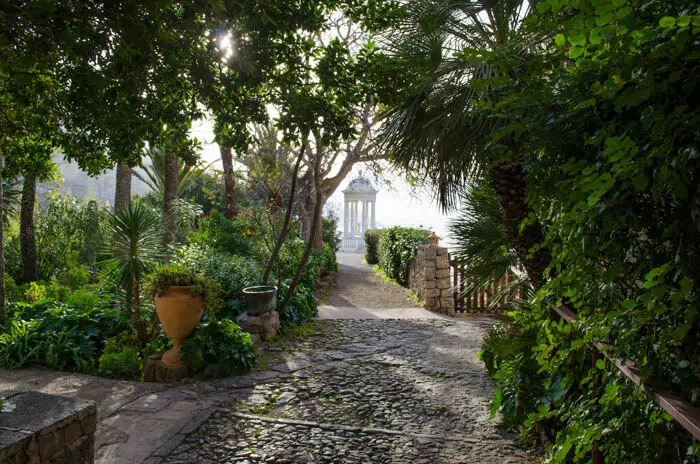
Even if you don’t plan to enter the house, a stop at the parking lot in front is worthwhile. There’s a lovely terrace with a view of the sea and the characteristic perforated rock, which I’ll tell you about shortly. There’s also a small bar available. The spot is particularly popular during sunset.
The Perforated Rock of Sa Foradada
From Son Marroig, a gentle, kid-friendly hike leads down to the spectacular perforated rock of Sa Foradada. On the way, you’ll encounter impressive caves and encounter free-roaming donkeys.
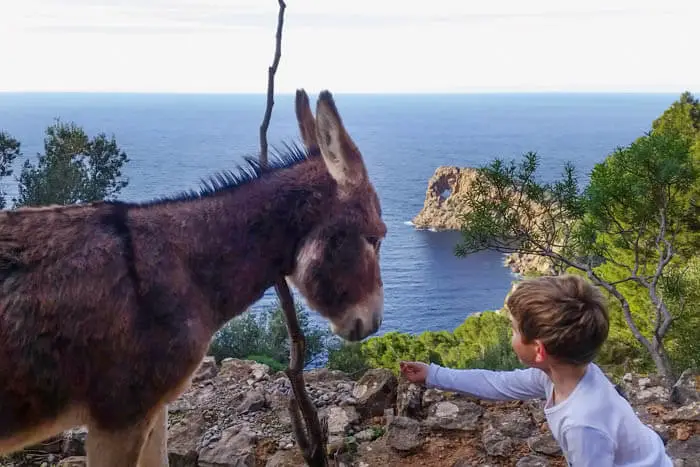
This tour is also suitable for younger children. The only challenge lies in overcoming some elevation gain. The path itself, apart from the incline, is not difficult.
Monasterio de Miramar
Administratively, the former monastery, which also belonged to the possessions of the Archduke, is part of Valldemossa. However, geographically, it aligns better with Deià. Founded by the scholar Ramon Llull in the 13th century as a missionary school.
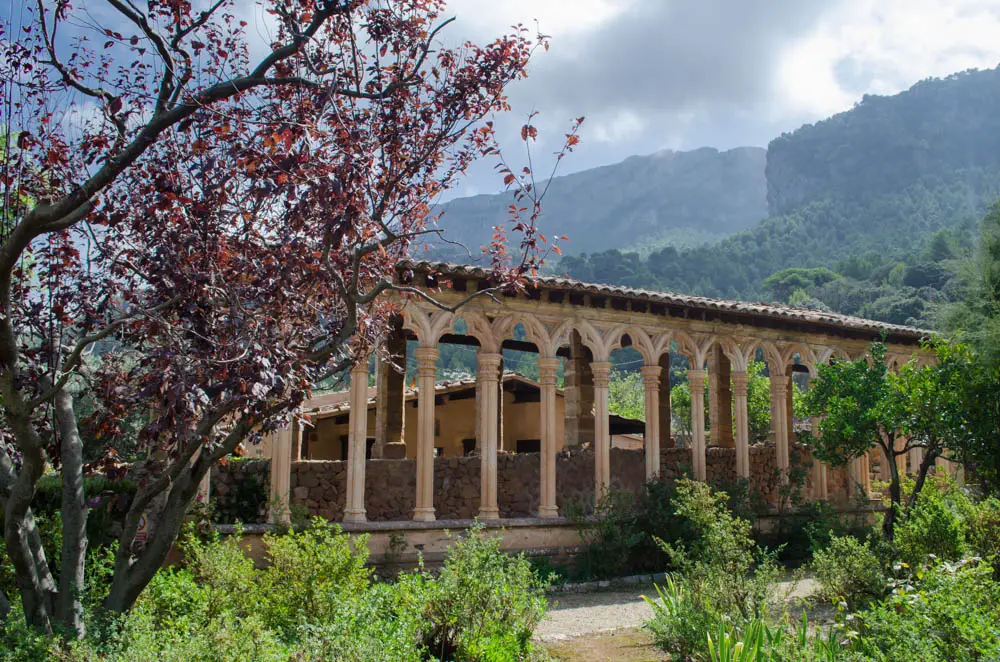
Apart from the buildings, it’s the gardens and the spectacular viewpoints that make a visit worthwhile. You can take smaller tours through the olive groves and reach some of the observation platforms, of which Archduke Ludwig Salvador had many erected here.
Panoramic Hike: Camí de s’Escolta
Three of the numerous viewpoints established by the Archduke are located on the panoramic hike along the Camí de s’Escolta. The tour is very easy with minimal elevation gain, taking you along the sea and through a section marked with climbing stones. However, climbing is not necessary; you can also walk around the stones.
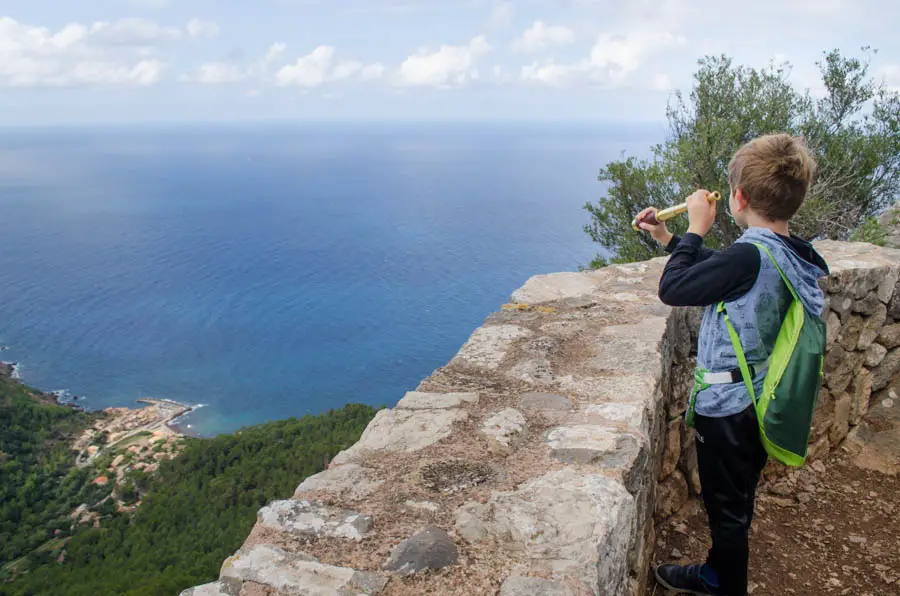
The well-preserved observation platforms provide opportunities for short breaks, picnics, and breathtaking views of Port de Valldemossa, as well as the estate of s’Estaca (also formerly owned by the Archduke), and once again, the perforated rock of Sa Foradada.
Circular Hike to the Hermitage Ermita de la Santísima Trinidad
For those who found the previous excursion too short, this one can be combined with it. Another relatively short circular hike, though it involves a bit more elevation gain. It takes you to a solitary hermitage with a chapel and a view of the sea.
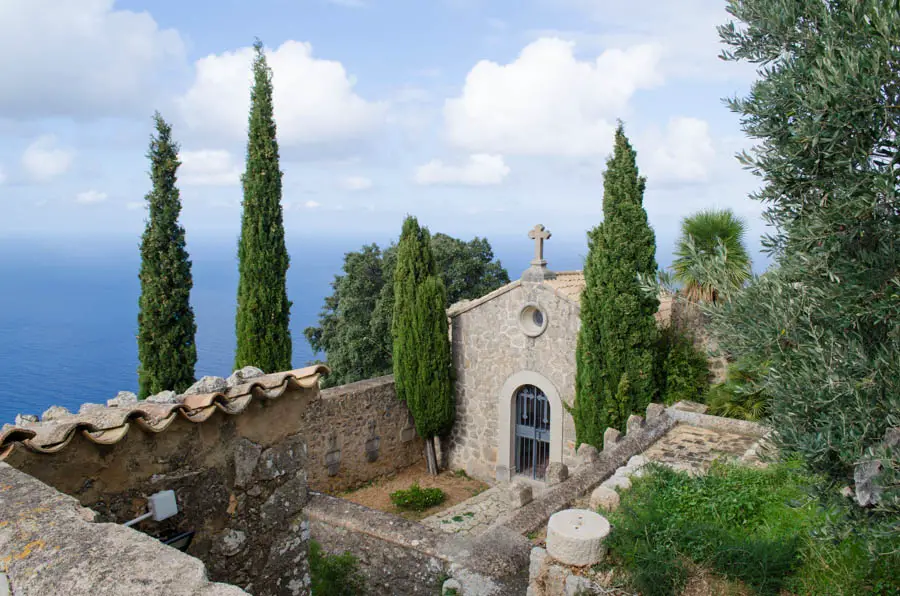
Additionally, the trail leads through an enchanting forest with ruins of old monasteries, observation towers, and industrial buildings where charcoal burners and lime burners worked many years ago. All in all, a very comprehensive tour, providing a close encounter with a lot of Mallorcan history.
Getting There and Parking in Deià
If there’s something not so great about Deià, it’s the parking situation. The village is small, the streets narrow, and parking spaces are a rare commodity, even the paid ones. Coming from Valldemossa, there are some free parking spaces at the entrance of the village. At the other end of the village, before the turnoff to Cala Deià, there’s a free parking lot. Paid parking is available in the town center and at Cala Deià.
To avoid the stress of searching for parking, you can also arrive by bus. The TIB Line 203 runs from Playa de Palma via Deià to Port de Sóller. In addition to the three stops in the village, it also stops at Son Marroig/Sa Foradada and Llucalcari.
Read More
Want more recommendations like this? Check out more than 100 day trips and excursions on Mallorca.
Planning your holiday on Mallorca:
Book your Flight here
Great Rental Car Offers

